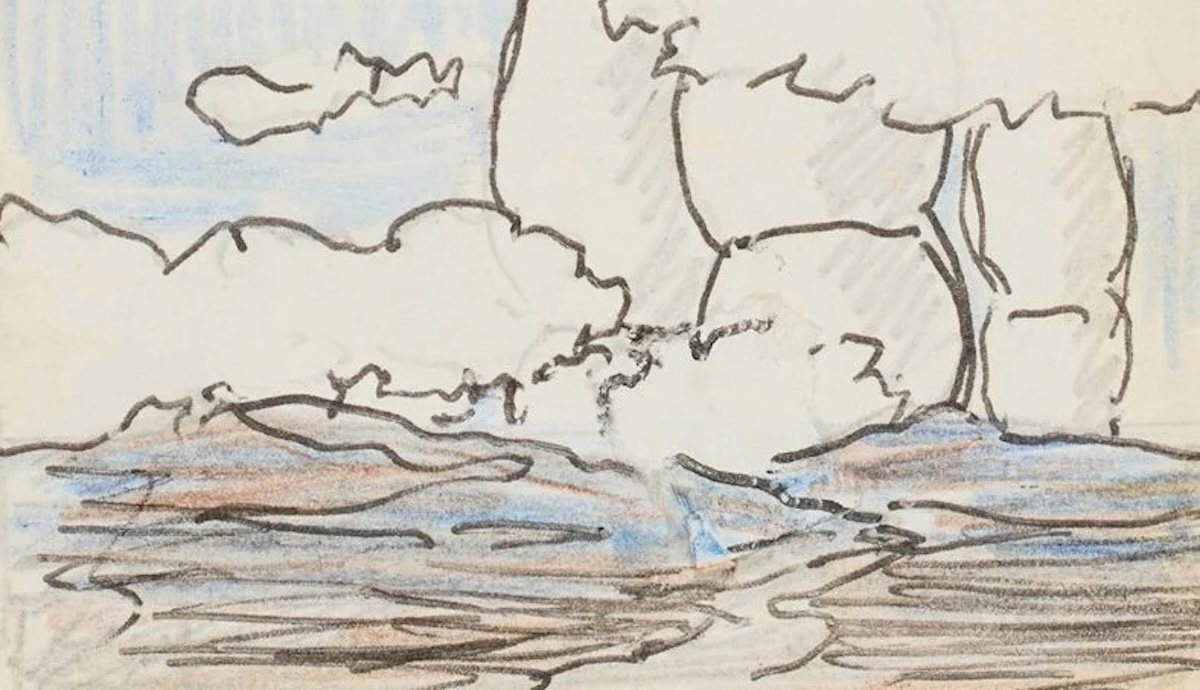
The Stedelijk Museum in Amsterdam is restituting a Henri Matisse painting from its collection, following “binding advice” issued this week by the Dutch Restitutions Committee. Odalisque will return to the legal successors of Albert Stern, a Jewish arts patron who was forced to sell the work due to Nazi persecution during World War II.
Restitutions Committee Issued “Binding Advice” to Stedelijk Museum

The Dutch Restitutions Committee advised the Stedelijk Museum in Amsterdam to return Odalisque by Henri Matisse (1920-21) to Albert Stern’s legal successors. Stern was a Berlin-based textile manufacturer of Jewish descent who emigrated to the Netherlands after the Nazis came to power in Germany. When the Nazis invaded the Netherlands in 1940, the Stern family made several failed attempts to flee. Due to persecution, Stern was forced to abandon his livelihood and sell off his possessions—including Matisse’s Odalisque, which the Stedelijk purchased in 1941. Albert Stern was eventually deported to a concentration camp, where he died in 1945.
According to a June 25 press release from the Stedelijk, “Following research, the [Dutch Restitutions Committee] concludes that it is sufficiently plausible that the sale of the painting was connected to the measures taken by the occupying forces against Jewish members of the population and arose from a desire for self-preservation.” The Stedelijk agreed to follow the committee’s recommendation. Touria Meliani, the Alderman of Culture for the Municipality of Amsterdam, said, “The suffering inflicted on Jewish civilians during the Second World War is unprecedented and irreversible…. The return of works of art, such as the Odalisque painting, can mean a lot to the victims and is of great importance for the recognition of the injustice done to them. As a city we have a role and responsibility in this.”
The History of Odalisque by Henri Matisse

The French modernist Henri Matisse famously fixated on the female figure from about 1917 to 1930, which is known as his Nice period. He was especially interested in painting the odalisque, a popular subject in European Orientalism. Such works depict a reclining female figure—typically nude or scantily clad in so-called “exotic” clothing—amidst ornamental textiles and objects. Painted in the early 1920s, the Stedelijk Odalisque was inspired by the artist’s earlier travels to Morocco. Matisse intentionally flattened the picture plane and focused on the aesthetic effects of line and color, emphasizing the erotic figure’s primarily decorative function.
Odalisque has belonged to the Stedelijk for over eighty years. Of the painting’s restitution, Rein Wolfs, the museum’s director, remarked, “We have had questions about the provenance of this work since our research into art from the collection in and around the war period, published in 2013. The issue was also highlighted in the exhibition The Stedelijk Museum and the Second World War in 2015. It is a step forward that together with the heirs, represented by the Commission for Looted Art in Europe, we have been able to jointly submit this case to the Dutch Restitutions Committee. This work represents a very sad history and is connected to the unspeakable suffering inflicted on this family. The ruling of the Restitutions Committee does justice to this history, and we naturally follow their binding advice.”
The Restitution of Looted Art in The Netherlands

The Nazi Party was in power from 1933 to 1945, during which time millions of artworks and other cultural objects were looted from across Europe. Many of these objects were stolen from Jewish owners. Soon after World War II officially ended in Europe in 1945, teams of art experts called Monuments Men began an international search for Nazi-looted art, aiming to return objects to their countries of origin. The restitution of these objects to their original owners or their descendants was then pursued at a national level.
Tens of thousands of artworks and cultural objects were illegally removed from the Netherlands during World War II. Nearly a century later, the effort to find and return them is still ongoing. The Dutch Restitutions Committee, which handled the case of Matisse’s Odalisque, was officially founded in 2011. It was established by the Dutch Ministry of Education, Culture and Science, but operates independently in The Hague. The committee accepts applications relating to the restitution of Nazi-looted art in the Netherlands.









